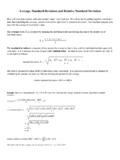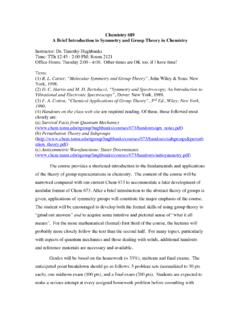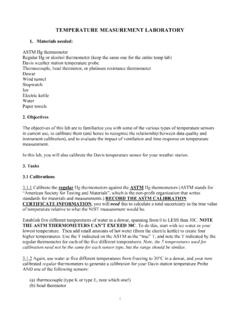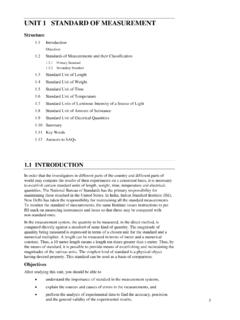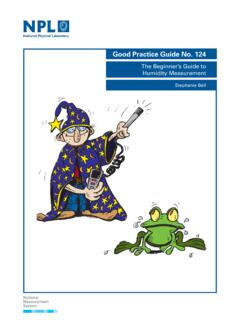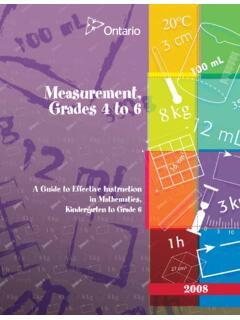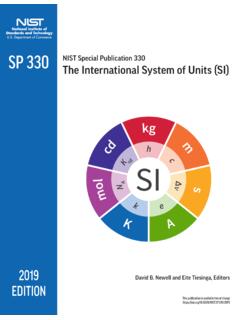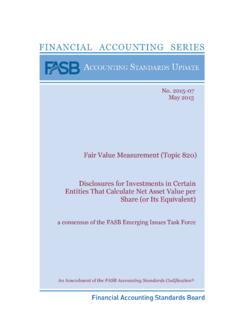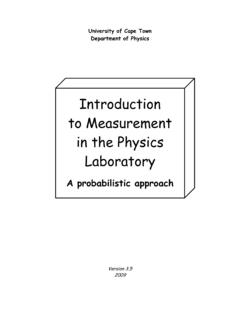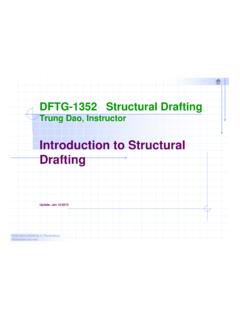Transcription of Experiment 1 Measurement and Density
1 Chem 119: Gene ral Chemistry I Laboratory 1. Texas A&M Chemistry Experiment 1. Measurement and Density Learning Objectives: To be able to measure the mass and volume of liquid samples using different laboratory instruments To distinguish between accuracy and precision, and determine sources of errors To be able to generate individual Density data, and obtain and analyze statistical interpretations from class data Experimental Objectives: To determine the Density of a known liquid (Coca-Cola variants) using several different glassware and instrument To compare class data and examine the accuracy and precision of each technique To use deductive reasoning to identify an unknown liquid Introduction: Density Matter has mass and volume.
2 Mass is a measure of the amount of material an object has and is usually given in grams (g) or kilograms (kg). Volume is defined as the amount of space an object occupies and is usually expressed as the units liters (L), meters cubed (m 3), and gallons (gal). Density is defined as the ratio of the mass of an object to the volume it occupies. different materials can have different densities and Density can be used to identify a substance. Mass (M). Density ( ) =. Volume (V). Density is an intensive property, meaning it does not depend on the size of the object. A 1 mL. sample of water, for example, has the same Density as 1 gal of water. Mass and volume are extensive physical properties of matter, and vary with the size of the sample.
3 Measurement The mass of a liquid or solid can be measured using a balance. There are 2 kinds of balances in the general chemistry laboratory: the analytical balance and the top-loading balance. The difference is in the uncertainty in the Measurement displayed by the instrument (Table 1). 1. Chem 119: Gene ral Chemistry I Laboratory 2. Texas A&M Chemistry Table 1. Uncertainties of instruments in the lab: Instrument Uncertainty Digital analytical balance g Top-loading digital balance g 25 mL graduated cylinder mL. 50 mL buret mL. 25 mL volumetric flask mL. 25 mL volumetric pipet mL. When doing mass measurements, it is important that the substance is at room temperature because substances that are not at room temperature can generate air currents that will affect the Measurement of sensitive balances ( , analytical balance).
4 Figure 1. A digital Analytical Balance (left) and a digital Top loading balance (right). volume mark Figure 2. 10 mL graduated pipette (left), 20 mL volumetric pipet (center) and a 50 mL volumetric flask (right). Several methods can be used to measure liquid volumes. The least accurate method is the use of the marked graduations on a beaker or Erlenmeyer flask (Table 1). More commonly, a 2. Chem 119: Gene ral Chemistry I Laboratory 3. Texas A&M Chemistry graduated cylinder is used, which has graduations in increments of 1 or mL. More accurate Measurement of volume can be made using graduated pipets, volumetric pipets, and volumetric flasks (Figure 2). In order to measure the volume of a liquid precisely, the top of the liquid can be referenced consistently by looking at the meniscus (usually a concave curve in the upper surface of the liquid) at eye level (Figure 3).
5 Improper position 24 mL Proper position Improper position Figure 3. Reading the volume of a liquid in a graduated cylinder. Experimental Errors Chemistry is an experimental science, and experiments involve measurements. Experimentally determined values for physical properties (like mass and volume of an object, heat produced from a reaction) may differ from their true ( , correct) values because it is nearly impossible to measure a true value. Experimental error is the difference between the true value and a value that is determined by experimental neasurement. It is a natural consequence of the limitations of the techniques, measurements, and interpretations of the results of an Experiment .
6 Experimental error can never be eliminated; however, a thorough understanding of the experimental theories and procedures will enable you to take proper steps to minimize errors. The most important factor in performing experiments is to collect data as truthfully and reliably as humanly possible and to report the data as is.. As discussed previously, there is uncertainty (error) with any Measurement due to the inherent limitations of the measuring equipment and the manner in which it is used (Table 1). Experimental error can be divided into two broad categories that are associated with measurements: systematic or determinate error and random or indeterminate error.
7 Systematic error has assignable causes and remains unchanged each time an Experiment is repeated. It can make all replicate measurements either too high or too low, but not both. This may occur due to faulty or miscalibrated instrumentation, personal error (failure to use an 3. Chem 119: Gene ral Chemistry I Laboratory 4. Texas A&M Chemistry instrument correctly) or reagent error (impurity, contamination, wrong concentration). In Density measurements, for example, systematic errors could arise from the repeated use of a contaminated sample. Random error is caused by unknown and unpredictable factors during an Experiment . It affects a Measurement in both positive (high) and negative (low) directions with indeterminate probability.
8 An example is the error arising from the vibration of a table supporting an analytical balance. Another source is an instrument is pushed to the extremes of its operating limits. Both of these random error sources could cause an analytical balance, for example, to show differences in the least significant digit of a g sample, by displaying weights of g, g and g. during repeated measurements. Unlike systematic errors, the effect of random errors can be minimized by averaging many measurements. Accuracy and Precision of Data Data analysis is an integral aspect of laboratory experiments, and is a skill that will be taught and emphasized throughout this course. To perform proficient data analysis, the measurements made during an Experiment must be accurate and precise.
9 The accuracy of a Measurement pertains to how close the measured value is to the accepted or correct value. Precision refers to the reproducibility of a Measurement , comparing several measured values obtained in the same way. For example, a student measured the volume of a liquid sample three times, using the same instrument each time. She obtained values of , , and mL. These measurements are precise because there is only a mL difference between the highest and lowest values. However, if the correct volume of the sample was actually mL, the accuracy of the data would be low because the difference of mL between the true value and the average of the three measurements is relatively large.
10 The accuracy and precision of data and measurements depend on an experimenter's techniques and on the quality of the measuring tools. One of the goals of this class is to teach students how to acquire data in the laboratory that are as accurate and as precise as possible, using the techniques and equipment that are available. In any Experiment , data collected are evaluated by comparison with known and established values ( true values), by doing a literature search and comparison with previously obtained data, by employing experimental techniques to decrease uncertainty sources, and by using statistical methods to analyze and manipulate collected data. This first laboratory Experiment will demonstrate the Measurement of mass and volume using different types of equipment, demonstrate the difference between precision and accuracy, and use these skills to determine and calculate the Density of an unknown substance.

